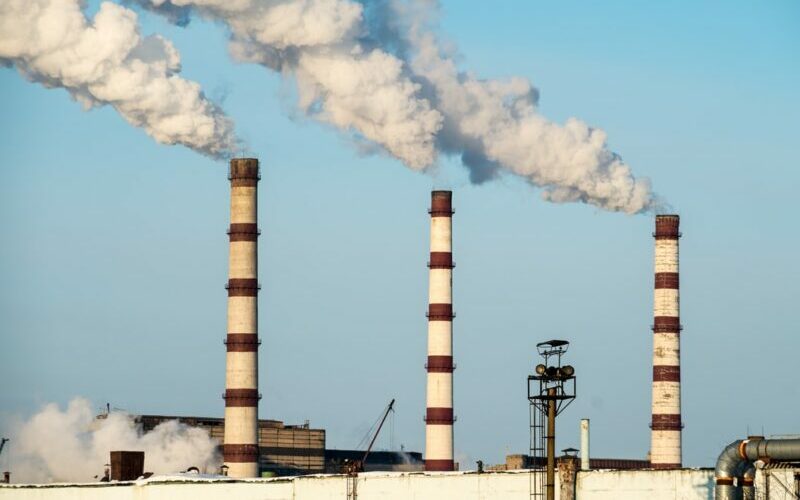The Australian dilemma: a gas-led recovery, stranded assets and carbon neutrality
Oct 1, 2021
If Australia’s coal and gas industry continues to expand production, it faces the prospect of an eyewatering accumulation of stranded carbon assets when Australia formally adopts a policy of net zero emissions by 2050.
This is an unspoken rider to the treasurer’s recent exhortation to Australian business leaders to accelerate the transition to renewables.
Josh Frydenberg’s apparent green conversion on the road to 2050 is no doubt energised by the International Energy Agency (IEA) which shocked its largely carbon asset-dependent corporate clients earlier this year by publicly calling for an immediate stop to new oil and gas production as a necessary condition for reaching 2050 carbon neutrality.
Estimates by the thinktank Carbon Tracker indicate the effect of implementing IEA’s call would be shelving around $US1 trillion in investment over the next 20 years by global oil and gas majors.
By 2030 the output of the world’s 40 largest producers would shrink by at least 50 per cent as current capacity runs down. Australia-based Woodside would see its production (as it was prior to its merger with BHP’s carbon assets) shrink by almost 50 per cent, and oil search by 75 per cent.
Woodside is clearly not of this mind and is thumbing its nose at the IEA by proceeding with its $3.9 billion Sangomar oil field development in Senegal — one of the globe’s five largest oil and gas projects approved in 2020. Those projects collectively involve $18 billion investment over the next decade — all in direct contravention of the IEA’s carbon neutral timeline.
The federal government is no less complicit in ignoring the IEA in its recent approval of Whitehaven’s $700 million expansion of its NSW Vickery coal mine. And no change of mind is evident by the Queensland or federal governments’ silence on Clive Palmer’s climate change-busting proposed new coal mines and the associated Waratah coal fired power plant (CFPP).
These moves to lengthen the life of coal come notwithstanding that coal will be the first to arrive on the stranded asset register.
The world’s most authoritative estimator of comparative costs Lazard puts the cost of coal power at three times that of renewables: commercial solar at $US33 MWh; wind at $US40MWh; coal at $US110MWh: combined cycle gas generation $US60MWh.
More importantly for Australia is that Lazard costs power from existing CFPP at above that of solar and wind in efficient locations (including Australia). Thus AEMO recently estimated the best CFPPs in Australia produce power at a levelised cost around $US60 MWh. That compares with Australia’s low cost solar of around $US26-30MWh.
Of course, these metrics are the cost of power at the factory gate (called LCOE). But the fall in battery storage costs means renewable wind and solar PV solar with two to four hours of battery storage is now able to manage a large proportion of storage needs.
(Nevertheless, our chief technology-not-taxes tsar Angus Taylor apparently holds the technology-defying view that batteries are yet to be a legitimate form of storage which should attract capacity payments.)
But technology is not resting — it is driving down the cost of wind and solar at a far more rapid rate than CFPPs which are technologically mature with little new technology coming onstream.
CFPPs’ costs are therefore flatlining and in many cases rising. A recent study by Carbon Tracker estimates that 77 per cent of global CFPPs are operating at a higher cost than new renewables.
This will rise to 98 per cent by 2026 and 99 per cent by 2030. So praise goes to the Australian government for hammering its mantra of technology not taxes. For if we dutifully follow energy cost curves there is clear scientific backing for cost effective early retirement of our current CFPPs — if for no other reason to meet the government’s professed first priority of keeping consumer power prices low.
The government’s persistent rejection of its own technology not taxes mantra contrasts with global trends.
As noted by Peter Sainsbury in Pearls and Irritations, a survey by the thinktank E3G shows technology driven low cost solar and wind has brought about a 76 per cent global cancellation of proposed CFPPs since the 2015 Paris climate agreement.
Moreover, since 2010 the same powerful technological forces have resulted in 56 per cent of operating CFPPs in OECD countries being either closed or scheduled to close by 2030, and further accelerating the stranding of coal assets is China’s decision to stop funding overseas CFPPs.
While the demise of coal is in full swing — at least outside Australia — the push by multinational energy companies to have gas play a major role as a transition fuel is shaping up as one of the most important impediments to global 2050 carbon neutrality.
As in the case of coal, the Australian government’s support of further expanding gas exploration and extraction runs directly counter to the IEA’s advice.
Indeed, pursuing a gas-led recovery will eventually only add to the gas industry’s stranded assets.
Renewable power has already sidelined gas as a mainstream fuel for power generation — Lazard calculates gas’s LCOE at around $US60MWh — well above the cost of renewables.
The real issue is, however, use of carbon capture and storage (CCS) to allow gas to remain the sole carbon-based fuel where renewable electricity is not a solution — such as steel and ammonia production.
Equally there are aspirations for its use, where cost competitive, as a “low carbon” fuel for sea transport and domestic and commercial heating. These are not insignificant applications: they collectively account for around 15–20 per cent of global GHG emissions if heating is excluded and around one third if included.
It is a critically important battle emerging between the world’s major oil and gas companies and those seriously seeking to reach carbon neutrality by 2050.
The intensity of the conflict is based on the prospect that, if they lose this battle, energy multinationals face no expansion of their operations in the future. That is, the commercial carbon club is seeing a truly bleak future as renewable power grids end coal dependence, electric cars put paid to petrol, and in the emerging scheme of things, green (renewable) hydrogen replaces grey (gas based) hydrogen.
The battle over gas is highlighted by various scenarios for the role for gas by 2050.
The “rapid” BHP scenario has gas volumes five times that of the lowest of the IPCC’s scenarios. The IEA’s net zero emissions scenario has gas capturing around 11 per cent of global energy demand and fuelling half of hydrogen’s production in 2050.
The bet on blue hydrogen is, however, made with little scientific assurance that gas’s fugitive emissions outside and from CCS can be sufficiently reduced to allow achievement of net zero emissions by 2050.
Equally, there is no serious consideration of the likelihood cost reducing technology combined with a carbon price will lead to a leapfrogging of grey hydrogen directly to green hydrogen.
Currently grey hydrogen costs around four times that of green hydrogen (produced by the use of renewable power for electrolysis of water).
But, as for solar and wind, the cost of green hydrogen is falling rapidly as economies of scale and learning rates are applied to much larger electrolysis plants. BloombergNEF estimates that green and grey will be at parity by 2030 in all major producing counties including Australia.
While such a rapid cost decline would pave the way for the Australia’s fledgling green hydrogen industry it would lead to stranding of global oil and gas companies’ newly developed production and beyond that projected under the IEA’s gas transition scenario.
There are, in any case, substantial barriers to the use of gas with CCS for blue hydrogen production.
Current gas to hydrogen plants are mature with little prospect of technology driving down cost over the next few decades. Equally problematic is that CCS technology has been subject to growing investment but given its nature there hasn’t been a radical reduction in cost.
Indeed, not a few studies indicate its real cost is understated given the need to prevent fugitive storage emissions and given the addition of maintenance costs.
But the most serious issue is the size of upstream production (and to a lesser extent downstream) fugitive methane emissions — an inevitable outcome of using gas as a fuel.
Recent studies indicate that production and use of blue hydrogen may create more emissions than simply burning natural gas. Thus if the technology development path of blue and green hydrogen are compared, there are convincing environmental and cost reasons why the latter path should be the logical choice.
Such a decision becomes compelling for Australia given, whether we like it or not, we will have to accommodate a carbon levy (tax?) in international trade.
No surprise then that global carbon energy multinationals are gearing up a global lobbying and advertising campaign which seeks to prevent the leapfrogging of gas to green hydrogen.
That campaign is no less evident in Australia where the gas industry is energetically advertising the “greenness” of gas. This campaign which seeks to camouflage the technological flaws embedded in grey hydrogen and the issue of fugitive gas emissions, is being run without pollical calling to account from either side of politics.
Moreover, the government’s current two-way bet on both blue and green hydrogen is, as argued, a commercially perilous and ultimately an unsustainable one. For the globe to meet much upgraded 2030 targets demanded by 2050 net zero emissions, green hydrogen production will have to be geared up rapidly.
The implications for Australia are therefore clear. If the government is to achieve carbon neutrality by 2050, the IEA’s prescriptions need to be adopted and a gas led recovery exorcised from whatever roadmap is served up. Equally, accepting the imperative for no new coal and gas projects can greatly reduce the flow of stranded assets in the future.
Frydenberg’s speech to business is hardly an encouraging indication that the government recognises what it needs to do.
To claim that, “we cannot run the risk that markets falsely assume we are not transitioning in line with the rest of the world” is clearly absurd. The government has been involved in deliberate and systematic slowing down of the process of transition with willing and generous assistance of the carbon lobby. That option will no longer be environmentally viable post-Glasgow.




